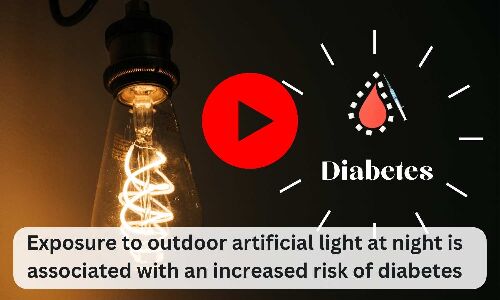
Diabetes is a critical public health
problem in China, and the onset and progression of the disease is largely
governed by behavioural and environmental risk factors. The nation’s rapid
urbanisation and economic growth has resulted in a dramatic increase in urban
lighting, and the number of people exposed to it.
A new study published
in Diabetologia (the journal of the European Association for the
Study of Diabetes [EASD]) finds that outdoor artificial light at night (LAN) is
associated with impaired blood glucose control and an increased risk of
diabetes, with more than 9 million cases of the disease in Chinese adults being
attributed to light at night exposure.
The study used data from the China
Noncommunicable Disease Surveillance Study. A total of 98,658 adults
participated, undergoing interviews to collect demographic, medical, household
income, lifestyle, education and family history information. The mean age of
participants was 42.7 years and around approximately half were women.
Body weight and height of participants were
measured to calculate BMI, and blood samples were taken to obtain levels of
both fasting and postprandial (after meal) serum glucose, as well as glycated
haemoglobin (HbA1c). This is a form of glucose bound to haemoglobin in red
blood cells which acts as a moving average of blood sugar over the previous 8
to 12 weeks.
Participants at each study site were
assigned an average artificial outdoor LAN exposure level for that location
using night-time low-light image data of the Earth’s surface from the US
Defense Meteorological Satellite Program (DMSP). Exposure levels were ordered
from lowest to highest and grouped into five quintiles (groups of 20% from
highest to lowest), with the median light intensity in the highest quintile
being 69 times greater than in the lowest.
These findings contribute to a growing body
of evidence suggesting that LAN is detrimental to health and demonstrate that
it may be a potential novel risk factor for diabetes. The authors conclude that
“further studies involving the direct measurement of individual exposure to LAN
are needed to confirm whether its relationship with diabetes is a causal one”.
Reference:
Outdoor light at night in
relation to glucose homoeostasis and diabetes in Chinese adults: a national and
cross-sectional study of 98,658 participants from 162 study sites;
Diabetologia, DOI: https://doi.org/10.1007/s00125-022-05819-x.
